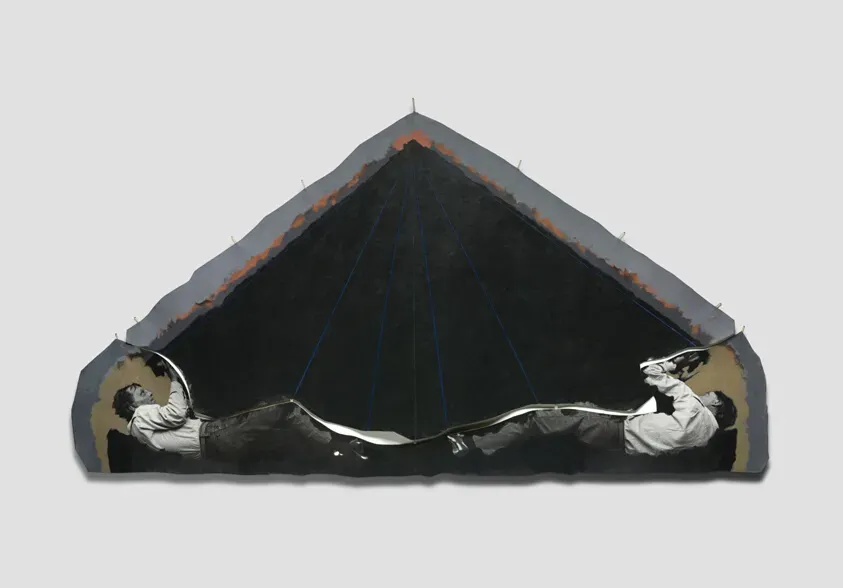Table of Contents
Tired of feeling lost in the gym or wondering if your home workouts are actually doing anything? Maybe you've heard about workout splits but aren't sure where to start, especially if your primary tool is that trusty kettlebell sitting in the corner. It's easy to fall into the trap of random exercises, hoping for the best. But what if there was a proven structure that maximizes your effort and targets every major muscle group effectively?
Why the Push Pull Legs Kettlebell Workout Works

Why the Push Pull Legs Kettlebell Workout Works
Organizing Your Training for Better Results
Think about the last time you just winged your workout. Maybe you did some swings, a few presses, then saw a cool exercise online and tried that. It felt okay, right? But consistency and progress often come from structure. The push pull legs split provides that structure by dividing your training days based on movement patterns. Push days hit muscles that push things away from your body – chest, shoulders, triceps. Pull days work the muscles that pull things towards you – back, biceps. Leg days are, well, for your legs, hitting quads, hamstrings, and glutes. This setup ensures you aren't overworking the same muscles every day and allows for focused training volume on specific actions.
Applying this to a kettlebell routine makes a ton of sense. Kettlebells naturally lend themselves to dynamic, multi-joint movements that fit perfectly into these categories. Presses and jerks? Push. Rows and cleans? Pull. Swings, squats, lunges? Legs. By grouping these exercises, you create efficient workouts. You hit the muscles hard from various angles within that movement pattern, then give them adequate time to recover before the next session. This targeted approach, using the unique leverage and balance challenges of the kettlebell, can drive serious progress in strength, power, and muscle development.
- Targets muscle groups effectively through movement patterns.
- Allows for sufficient recovery between training push, pull, and leg muscles.
- Maximizes training volume on specific movement types.
- Pairs well with kettlebell exercises' natural movement patterns.
- Provides a clear roadmap for weekly training.
Designing Your Push Day Kettlebell Workout

Designing Your Push Day Kettlebell Workout
Hitting Those Pushing Muscles Hard
Alright, let's talk push day. This is where you build that chest, those shoulders that look like cannonballs, and triceps that pop. Think about movements where you're extending your arms and pushing weight away from your body. For a kettlebell push day, this means presses – overhead presses, floor presses, maybe even some push-ups with your hands on the bells for added depth. It's not just about grinding out reps; it's about controlling the weight, feeling the muscles work, and maintaining tension throughout the movement. You want to select exercises that challenge you but allow for good form. Don't just grab the heaviest bell you can; start with a weight you can control for your target rep range.
Selecting Your Kettlebell Push Arsenal
So, what kettlebell moves belong on your push day? The overhead press is king. Single-arm, double-arm, seated, standing – they all build shoulder strength and stability. Floor presses are a solid alternative to bench press, hitting the chest and triceps effectively while being easier on the shoulders for some people. Don't forget push-ups; elevating your hands on kettlebells increases the range of motion, making them tougher. Sometimes I'll throw in some strict presses followed by a few sets of push presses if I want to work on power. The key is variety over time, but consistency within a training block. Pick 3-4 exercises and focus on getting stronger with them.
- Single-Arm Kettlebell Overhead Press
- Double Kettlebell Floor Press
- Kettlebell Push-ups (hands on bells)
- Kettlebell Push Press
- Half-Kneeling Single-Arm Press
Effective Pull Day Kettlebell Exercises

Effective Pull Day Kettlebell Exercises
Pulling Your Weight with Kettlebells
so you've pushed. Now it's time to pull. Pull day is all about working the muscles that bring things towards you – primarily your back (lats, rhomboids, traps) and your biceps. Ignoring pulling movements is a surefire way to develop imbalances, leading to rounded shoulders and potential pain down the road. Think about how much we push in daily life (opening doors, pushing carts) versus how much we pull (opening drawers, picking things up). We need to deliberately train the pull muscles to stay balanced and strong. Kettlebells are fantastic for this because their unique shape and off-center weight challenge your grip and core stabilization more than traditional dumbbells or barbells.
Selecting the right kettlebell exercises for your pull day is key to building a strong, capable back. Rows are your bread and butter here. Single-arm rows from a bench or in a bent-over stance hit the lats hard. Gorilla rows, where you're hinged over and rowing both bells simultaneously, are brutal in the best way. Cleans are a dynamic pull that transitions into a rack position, working your hips, back, and arms. Don't forget high pulls – a powerful movement that targets the upper back and traps. You can also incorporate movements like bent-over rows or even some controlled swings with a focus on the hinge and back engagement. Aim for a mix of heavy, strength-focused pulls and maybe some lighter, higher-rep work for muscle endurance.
- Single-Arm Kettlebell Row
- Gorilla Row
- Kettlebell Clean
- Kettlebell High Pull
- Bent-Over Kettlebell Row (double or single bell)
Building Your Leg Day Kettlebell Routine with Kettlebells

Building Your Leg Day Kettlebell Routine with Kettlebells
Why Kettlebells Are Leg Day Powerhouses
Alright, let's get to the foundation: legs. Some folks treat leg day like a chore, but with kettlebells, it becomes something else entirely. The dynamic nature of kettlebell movements, especially swings and cleans, forces your posterior chain – hamstrings, glutes, lower back – to work in concert. Unlike steady barbell lifts, the swinging weight challenges your stability and power production from the ground up. You're not just moving weight; you're controlling momentum. This translates to real-world strength and athleticism. Plus, the ability to easily transition between exercises makes for brutal, efficient leg workouts that leave you feeling genuinely accomplished, not just tired.
Essential Kettlebell Leg Exercises
So, what are the must-do kettlebell moves for your lower body day? Goblet squats are non-negotiable. Holding the bell at your chest helps keep your torso upright and teaches perfect squat form. Kettlebell swings are king for explosive power and hitting the glutes and hamstrings like nothing else. Don't skip lunges – walking lunges with a single or double bell, or even overhead lunges, will torch your quads and glutes while challenging your core. Romanian Deadlifts (RDLs) with kettlebells are fantastic for hamstring and glute strength. And if you're feeling spicy, double kettlebell front squats are a serious test of leg and core strength. Mix and match these based on your goals and what feels right for your body.
- Kettlebell Goblet Squat
- Two-Handed Kettlebell Swing
- Single-Arm Kettlebell Swing
- Kettlebell Walking Lunge
- Kettlebell Romanian Deadlift (RDL)
- Double Kettlebell Front Squat
Structuring Your Kettlebell Leg Day
Now, how do you put it all together? A typical leg day with kettlebells might start with a power movement like swings or cleans to get the nervous system firing. Then move into your main strength exercises like goblet squats or front squats. Follow that up with some unilateral work like lunges. Finish off with an exercise targeting the posterior chain specifically, like RDLs. Think about rep ranges too – heavier weight for lower reps (5-8) on strength movements, and slightly lighter weight for higher reps (10-15) on accessory or conditioning-focused exercises like swings or lunges. Don't be afraid to experiment with complexes or circuits for a conditioning challenge.
Sample Push Pull Legs Kettlebell Workout Split and Tips

Sample Push Pull Legs Kettlebell Workout Split and Tips
Structuring Your Week with the Push Pull Legs Kettlebell Split
Alright, so you know the movements for push, pull, and legs. How do you actually put this into a weekly schedule? A common way to run a push pull legs kettlebell workout is a 6-day split, hitting each muscle group twice a week. This allows for plenty of frequency to build skill with the kettlebell movements and volume to stimulate growth and strength. It might look something like this:
Monday: Push Day
Tuesday: Pull Day
Wednesday: Leg Day
Thursday: Rest or Active Recovery (like a light walk)
Friday: Push Day (often slightly different exercises or rep schemes than Monday)
Saturday: Pull Day (again, vary it up slightly)
Sunday: Leg Day (you guessed it, mix it up)
This isn't the only way, of course. If your recovery isn't great, or your schedule is tighter, you could do a 3-day split hitting each group once, or a 4-day split with two on and one off. The key is consistency and listening to your body. Don't jump into 6 days if you're currently training twice a week. Build up to it.
- Monday: Push
- Tuesday: Pull
- Wednesday: Legs
- Thursday: Rest/Active Recovery
- Friday: Push
- Saturday: Pull
- Sunday: Legs
Making the Push Pull Legs Kettlebell Workout Effective
Just following the split isn't enough; you need to train smart. For your push pull legs kettlebell workout to really pay off, focus on progressive overload. That doesn't always mean adding more weight every single session with kettlebells (though it can). It might mean doing one more rep than last week, doing the same reps but with better form, decreasing rest time, or even doing slightly more challenging variations of the exercises. For instance, move from a two-handed swing to a single-arm swing, or from a floor press to a strict overhead press.
Warm-up properly before each session. Mobility work and light movements specific to the day's workout prepare your joints and muscles. Don't skip cool-downs either – a few minutes of stretching can help. Nutrition and sleep are non-negotiable. You can't out-train a bad diet or lack of sleep. If you're constantly sore and tired, you're not recovering, and you won't make progress. Also, don't be afraid to take an extra rest day if you feel truly run down. Consistency over intensity is the mantra here, but smart intensity within that consistency is the goal.
Tip | How to Implement |
|---|---|
Progressive Overload | Add reps, sets, decrease rest, improve form, use a heavier bell (when possible) |
Listen to Your Body | Take rest days when needed, don't push through sharp pain |
Prioritize Recovery | Focus on sleep (7-9 hours), hydration, and nutrition |
Warm-up/Cool-down | Prepare muscles and joints before, aid recovery after |
Implementing Your Kettlebell Push Pull Legs Split
Adopting a push pull legs kettlebell workout provides a clear, structured path for your training. By dedicating specific days to pushing, pulling, and lower body movements, you ensure consistent work on major muscle groups without excessive overlap. This approach, when combined with the dynamic nature of kettlebell exercises, offers a practical way to build strength and improve conditioning. It’s not a magic bullet, but a sensible framework that, with consistent effort and attention to form, can yield tangible results.